We are standing alongside two large green industrial wheelie bins in the delivery area for The Covered Market in the heart of Oxford. It’s not the most salubrious of places, certainly not a location to linger long. But this time last year about 30 of us, carrying tall slender willow wands are gathered here together looking up at an old square stone set into the wall. It is carved with what looks like a military cross (the cross of St Michael I discover later) and reads St Martin, All Saints and St Michael at the North Gate marking the boundary between three of Oxford’s ancient church parishes. One of our party steps forward and chalks the date on to the stone. Then, one by one, we all whack our stick against the freshly decorated cross, shouting dramatically as we do so, “Mark! Mark! Mark!”
I had been invited to join the congregation of the Church of St Michael at the North Gate (SMNG) in an age-old custom called ‘beating the bounds’ or sometimes ‘perambulations’ or ‘going a ganging’. In the days before maps and title deeds, when the parish was the basic unit of taxation and local government, it was important that people knew which parish they lived in and where the boundaries began and ended. An acquaintance with the parish boundaries was important to settle disputes like who was accountable for paying for church repairs, who would look after the poor, or who could be buried in which churchyard. There are sad stories of unmarried mothers being sent from parish to parish, for wherever the child was born was responsible for its upkeep. And so, a system of markers was set up. Every year, usually 39 days after Easter on Ascension Day, the parish priest would head off with a gang of boys, to beat the boundaries (whether it be tree, wall, stream, or stone) with sticks. This was in part to ward off evil spirits from the area for the coming year, but also to pass on the knowledge of its borders to the next generation. Sometimes the children were beaten with the branches, or had their heads banged against the stones; in one place their heads were dunked in the stream, in another they were made to run along the top of the wall so fast they fell into the brambles. It was apparently believed then that these painful associations would improve their memory.
Today, the kindly Reverend Anthony Buckley, the vicar of SMNG, in full ecclesiastical apparel, along with a member of his choir Tom Dixon holding a large wooden cross, are content merely to show their parishioners (and a group of hangers on and tourists) the way without threat or punishment. His parish is rather larger than it once was – taking in that of St Martin (the church tower on Carfax all that is left after its demolition in 1898) and All Saints (since 1971 the library for Lincoln College). But it remains pretty much inside the old city walls. And the 30 or so boundary stones that once stood in alleyways and on age-old walls, are found in the most unexpected of places in 21st century Oxford. Shoppers in the clothing department of Marks and Spencer’s stop to stare as we sweep past the rails of summer dresses, eager to bash the brass plaque on the floor near the tills with our wands. The original stone is still here to see but kept safe in a glass cabinet in the corner. There’s one that sits next to the bottles of ketchup and boxes of napkins in the kitchen of Wagamama on Market Street, another in a storeroom of TK Max in the Clarendon Centre, and we must squeeze past the cars in Lincoln College car park to get a chance to beat the stone behind the Rector’s parking space. Some are inaccessible, but presumably still there buried deep in some new development.
There is an ancient law that says if you are following a swarm of your own bees, you can wander through any land without trespass. It is the same with ‘beating the bounds’. Through St Peter’s College and into its pretty rear garden we go, there’s more stones and also refreshments in Brasenose College, and a back door to the Town Hall takes us to a marker on the left of the main entrance. At each place we are encouraged to strike the stone, which some take to with the hearty gusto of those who are suddenly given permission for an unlawful act of violence. One theatrical fellow enjoys it so much he has no problem in repeating the process for onlooking tourists to record on their camera phones.
I find the whole thing eccentric, baffling and oddly charming. At each spot the Vicar says a quiet prayer. At Boots the Chemist it’s for the shops and businesses around Carfax (in need of some divine intervention as shoppers now head towards Westgate). In an alleyway in Market Street, he prays for the those who sleep rough. At the stone cross on Broad Street where Archbishop Cranmer and Bishops Latimer and Ridley were burned at the stake there’s a prayer for all those suffer for their beliefs. There’s something for everyone. Photographers, journalists and even writers of blogs get a mention.
By the end of our two-hour amble, our disparate band of travellers, all participating for their own reasons, have found common ground in the sharing of this ritual, passed down through generations. Our final stop is Lincoln College (since 1427 the patron of SMNG) where we leave our sticks at the door and retire to the splendid dining hall for lunch. Lincoln, confusingly, has its own traditions. We are presented with a glass of beer, supposedly tainted with ivy, a custom that originated from an old student skirmish. After which we gather on the lawn outside to watch the college choir sing from the gateway tower and then throw coins to a class of children from Combe Primary School waiting in excitement below, (hats are now compulsory). The coins were red hot until not that long ago, apparently to discourage avarice – and from this we get the expression ‘burning your fingers’. Today’s children have it easy I hear you cry.
Heading home through the bustling streets as residents and visitors go about their daily business and life continues as usual I wonder what it has all been about. But I am happy to have taken part in this ancient marking of territory, this gathering of people in local pilgrimage. For a short time I have put aside the day to day. And I’m all the better for it.
Beating of the Bounds of the parishes of St Michaels at the Northgate with St Martins and All Saints will take place this year on Thursday 9th May 2024. It starts with a service at the church at 9am, and then continues on to beat the bounds from 10am.
Contributing photographer John Milnes.
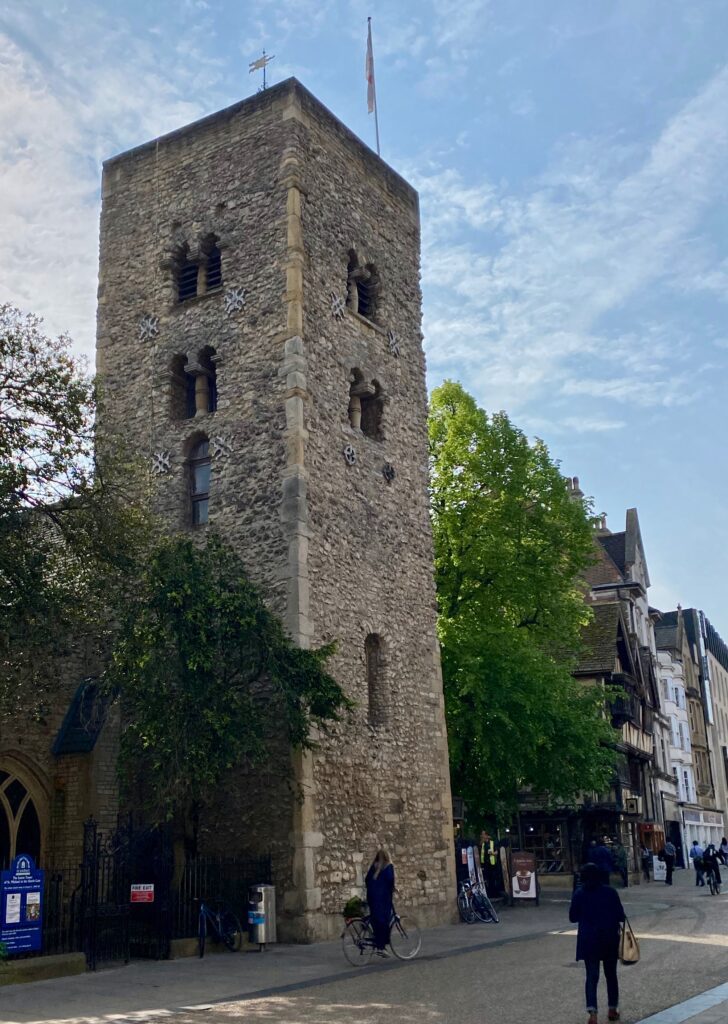
The oldest building in Oxford, the tower of the Church of St Michael at the North Gate was once part of the Anglo Saxon fortifications of Oxford, and would have served as an important vantage point for people arriving from the north. SMNG is the parish church for the city of Oxford, as opposed to the University church of St Mary the Virgin who do their own ‘beating of the bounds’.
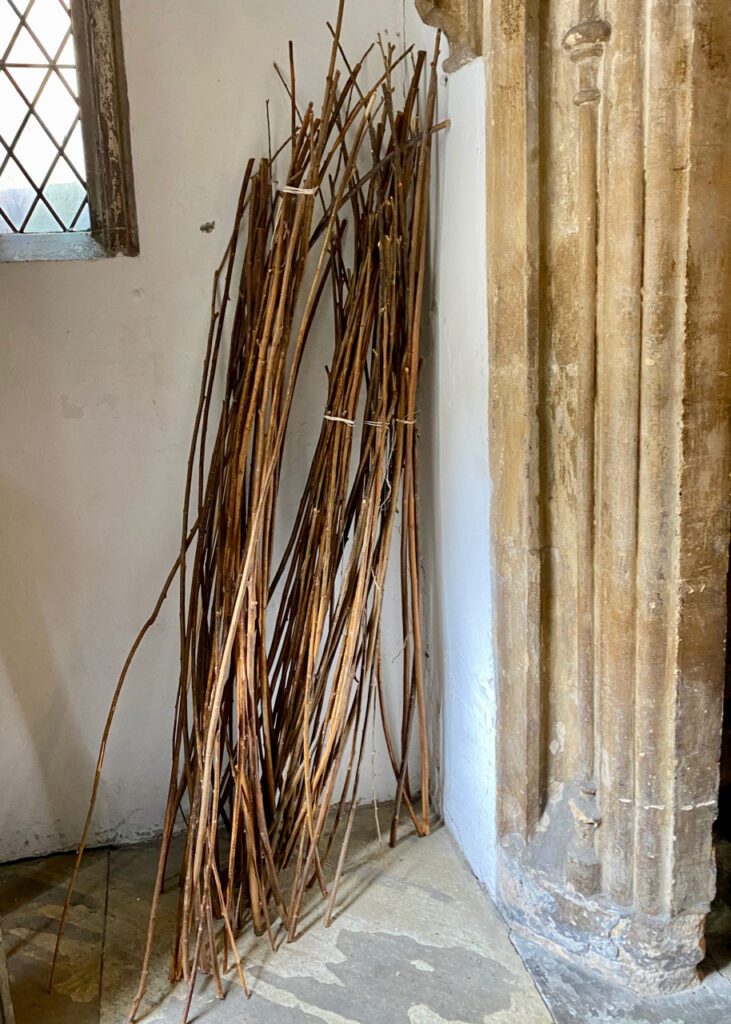
The willow wands used in ‘beating the bounds’.
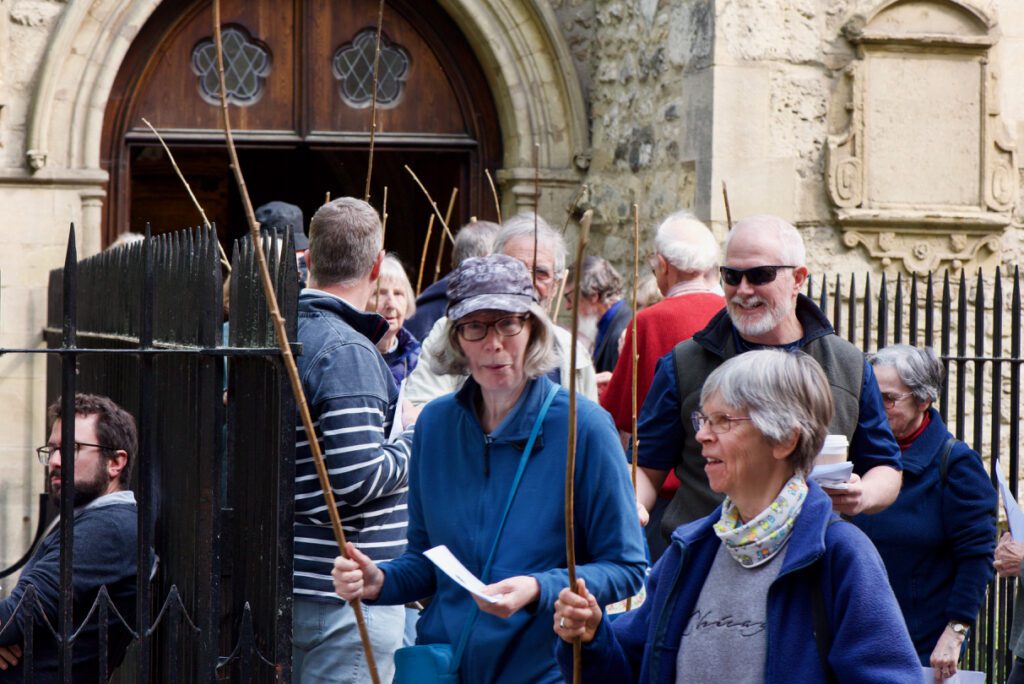
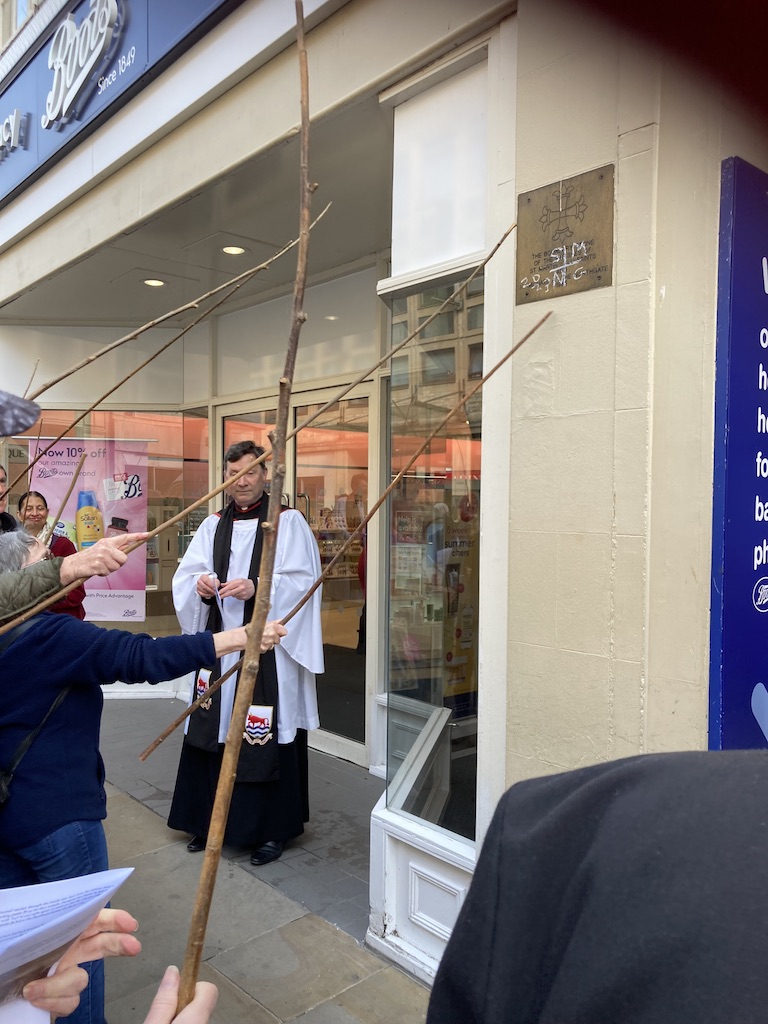
Outside Boots the chemist, on the wall on Cornmarket.
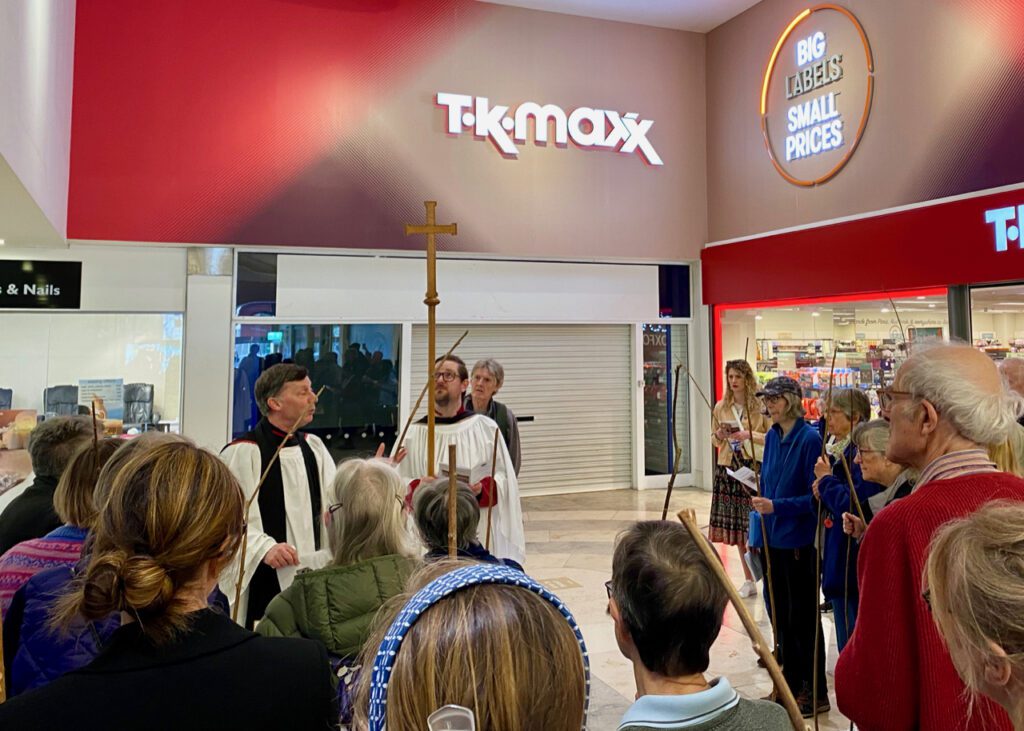
Probably the oldest stone lies in the rear store room behind TK Max at the back of the Clarendon Centre, inaccessible when we visited.
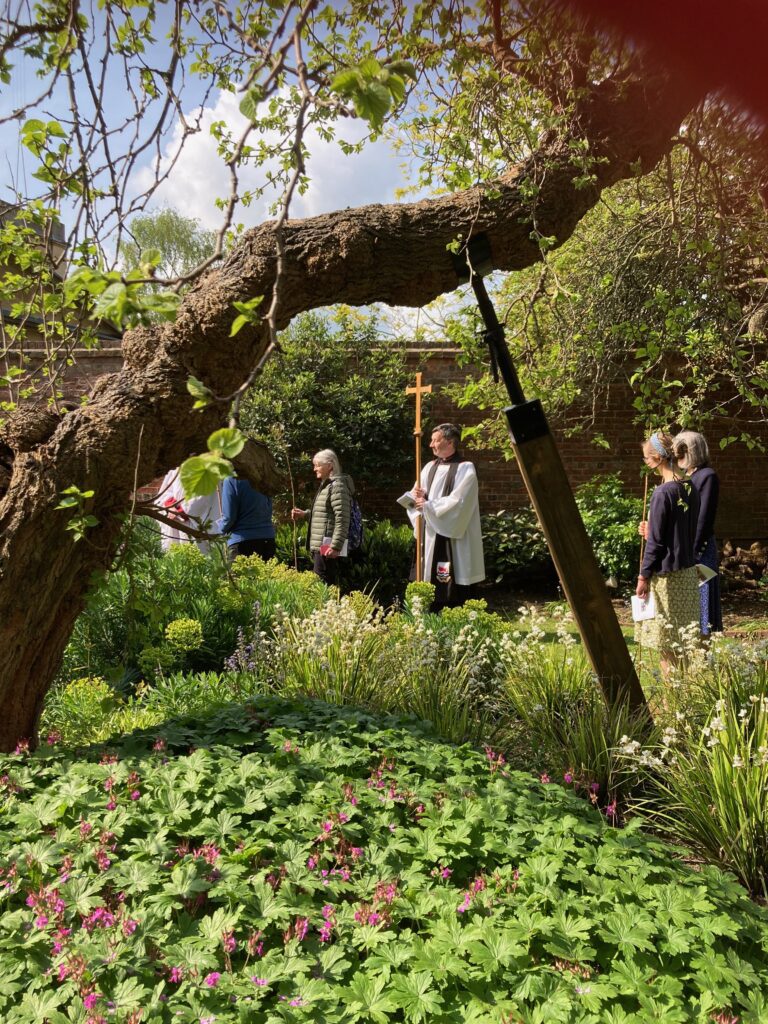
The beautiful rear garden of St Peter’s College. I had no idea this existed.

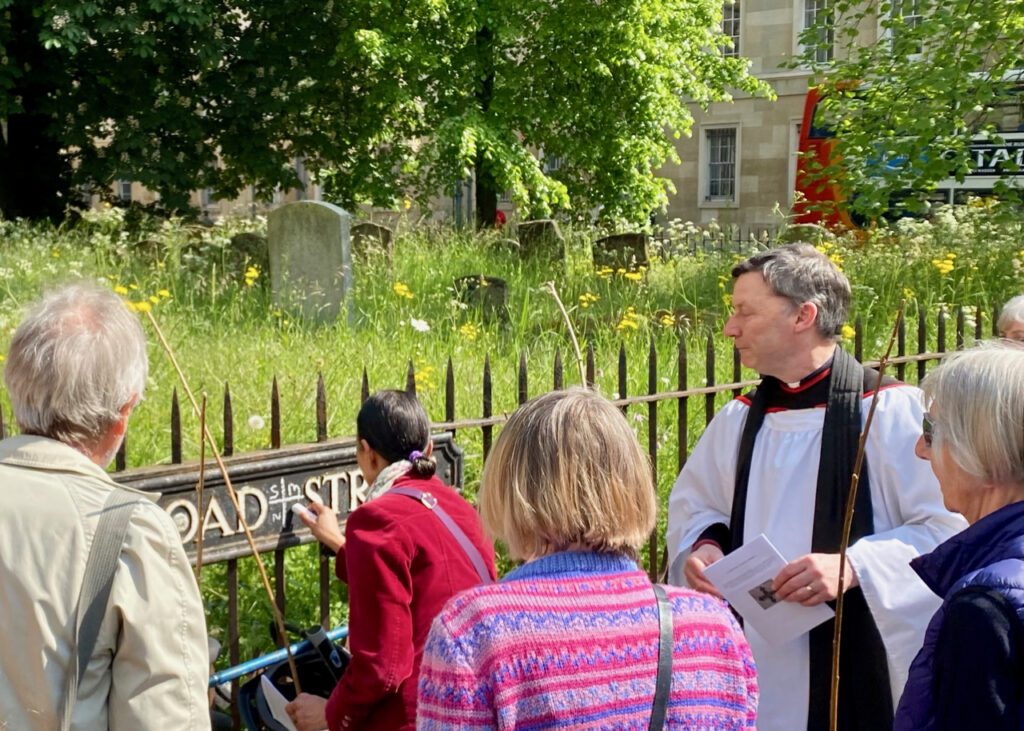
Chalking up the boundary to the south of the church of St Mary Magdalen.
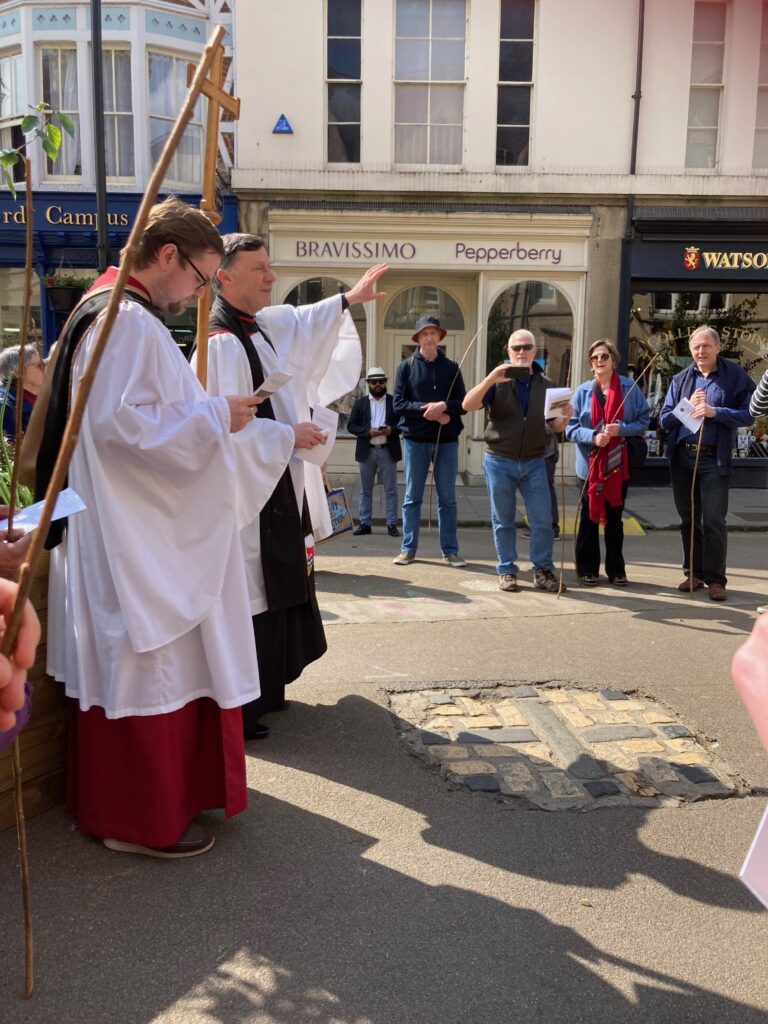
At the Martyr’s Cross the vicar reads from John Foxe’s, ‘The Book of Martyrs.’
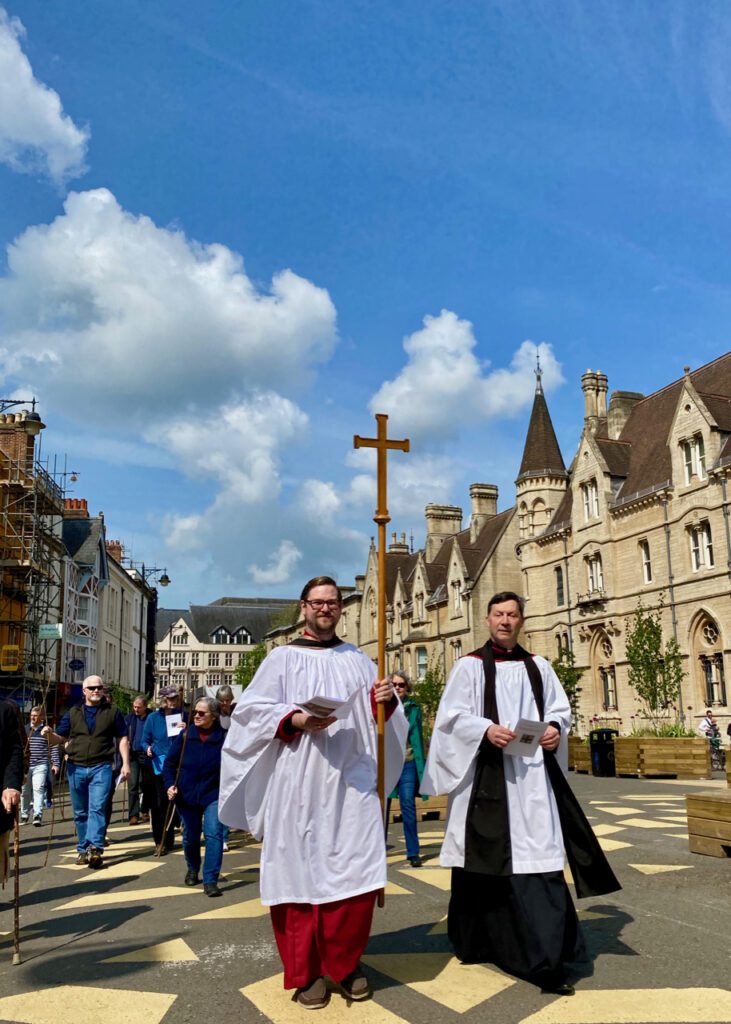
Onwards down Broad Street
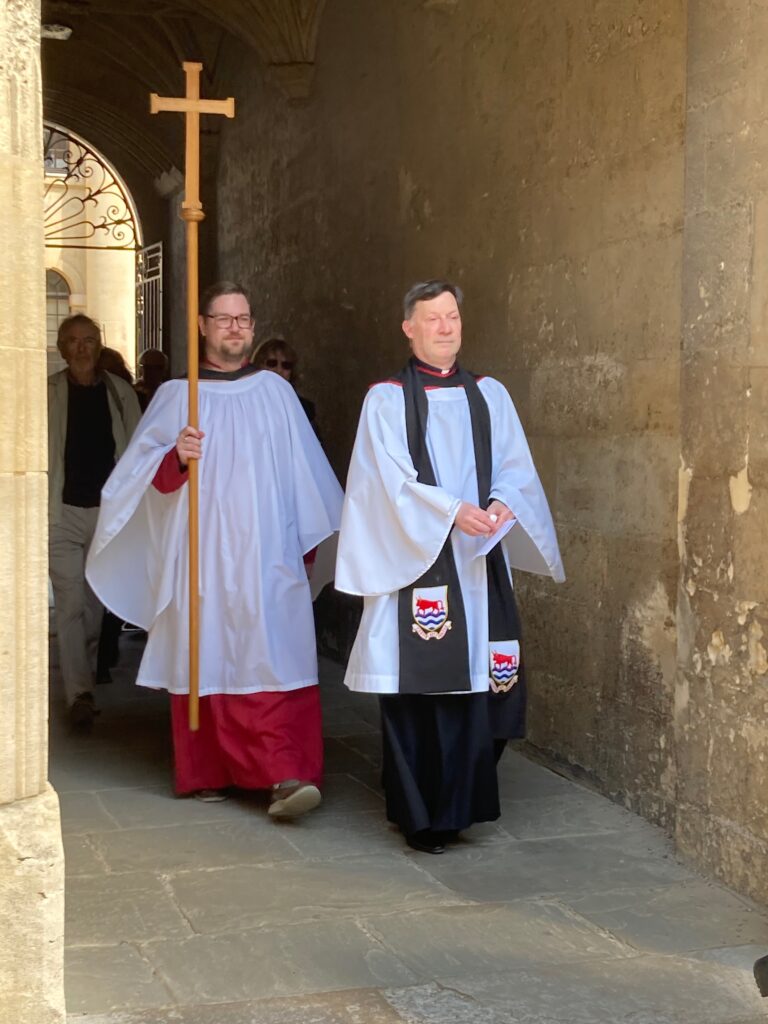
Through the Old Bodleian LIbrary
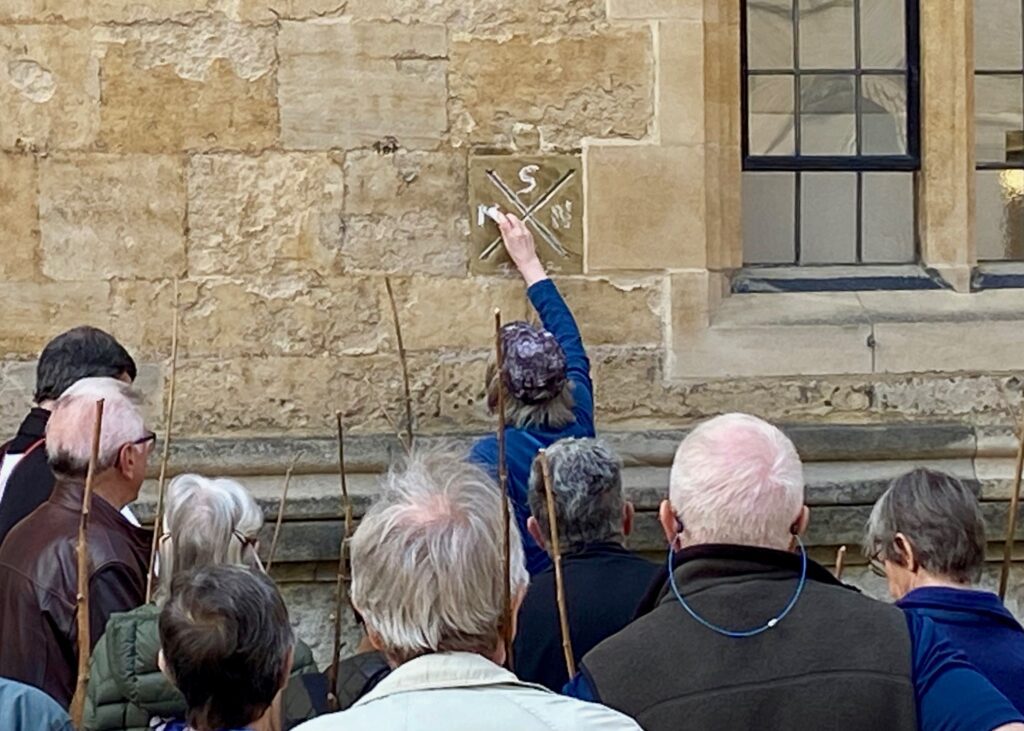
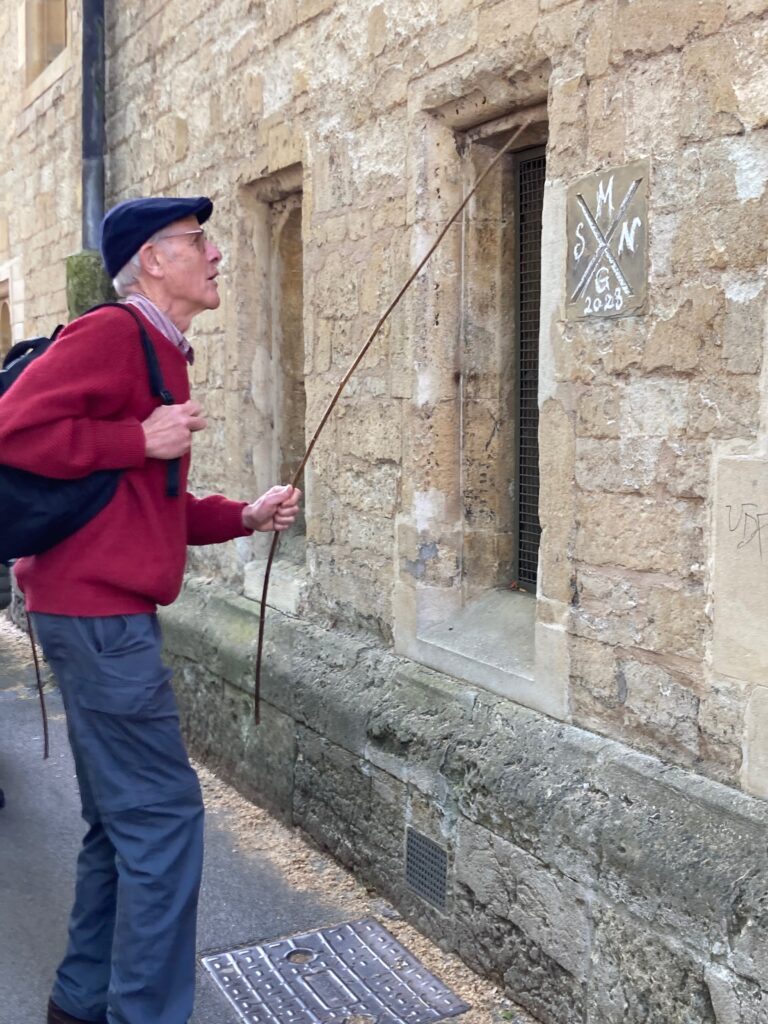
Down Brasenose Lane
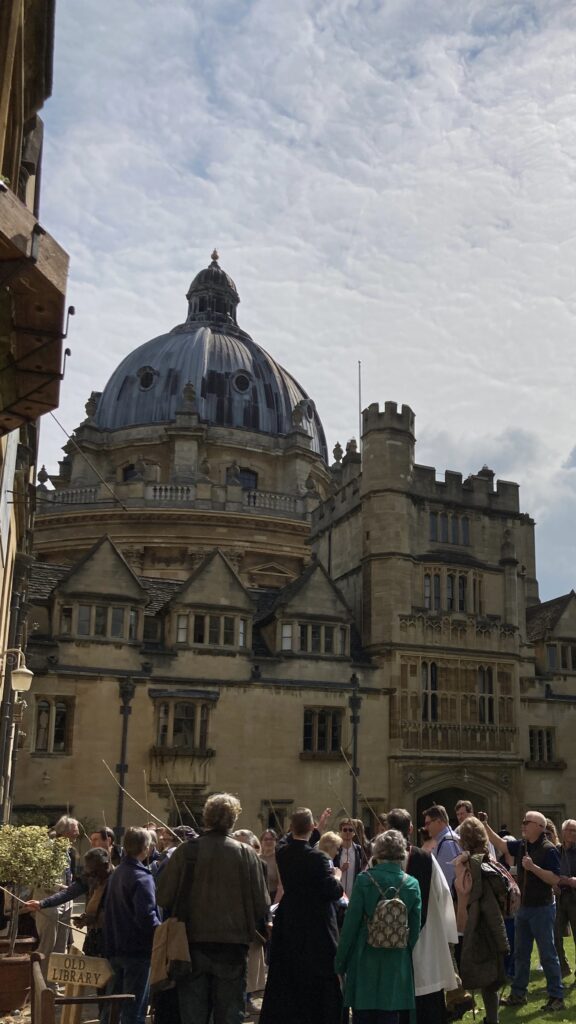
And into Brasenose College with the Radcliffe Camera behind.
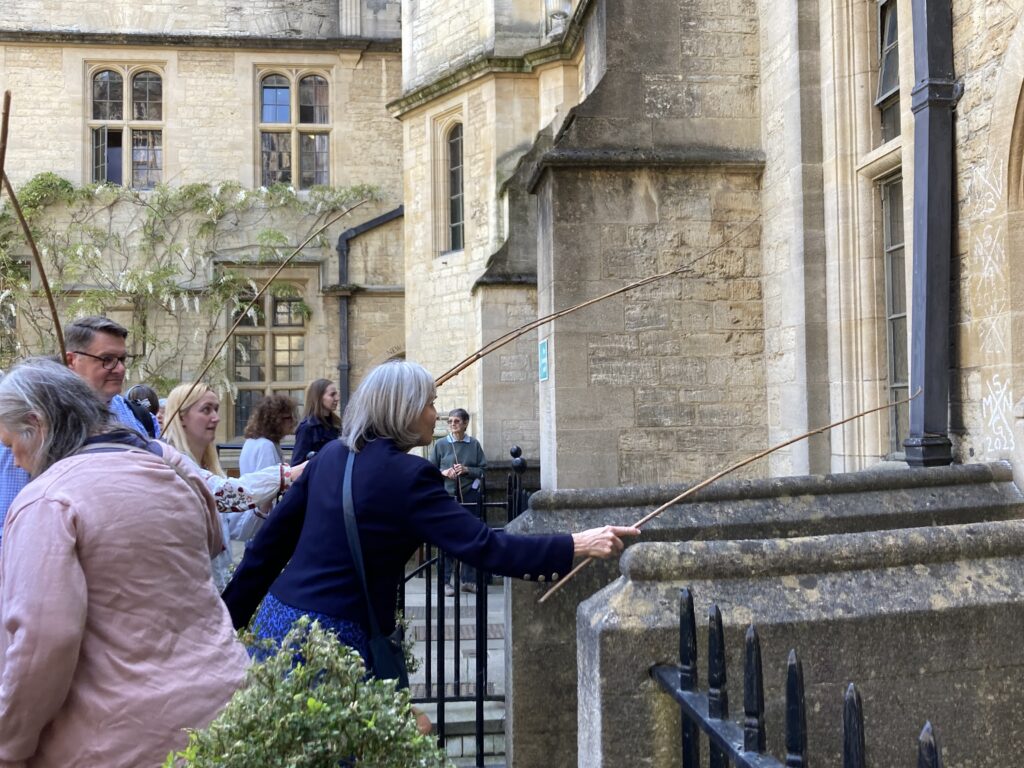
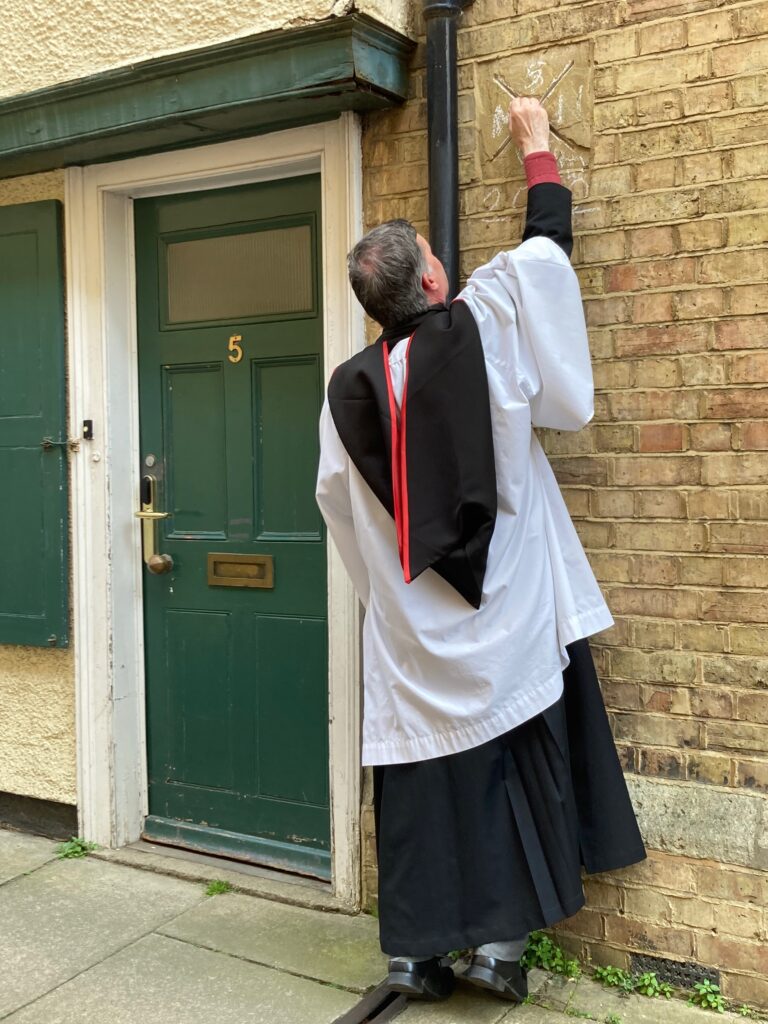
Bear Lane
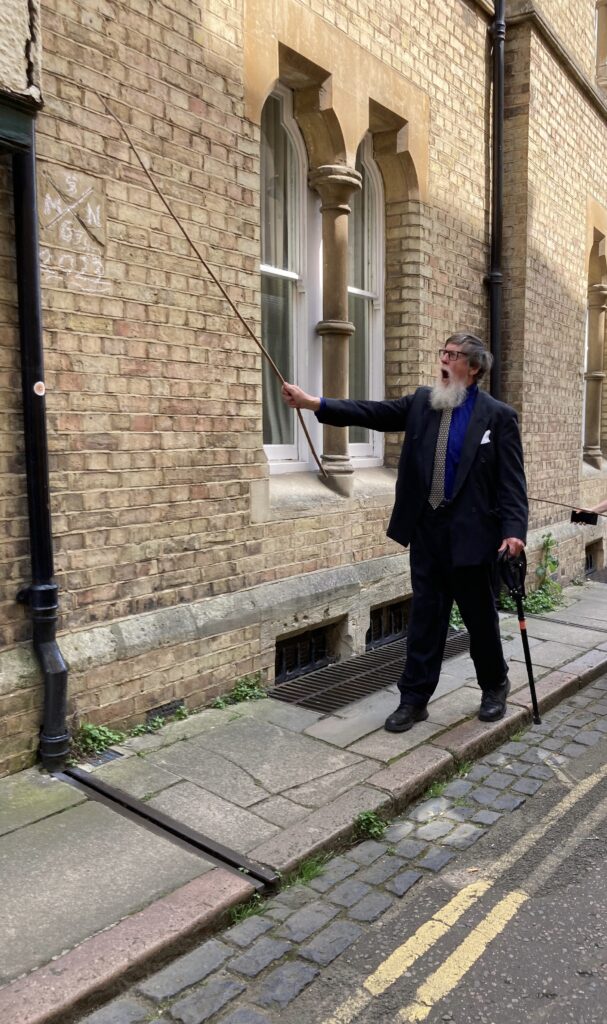
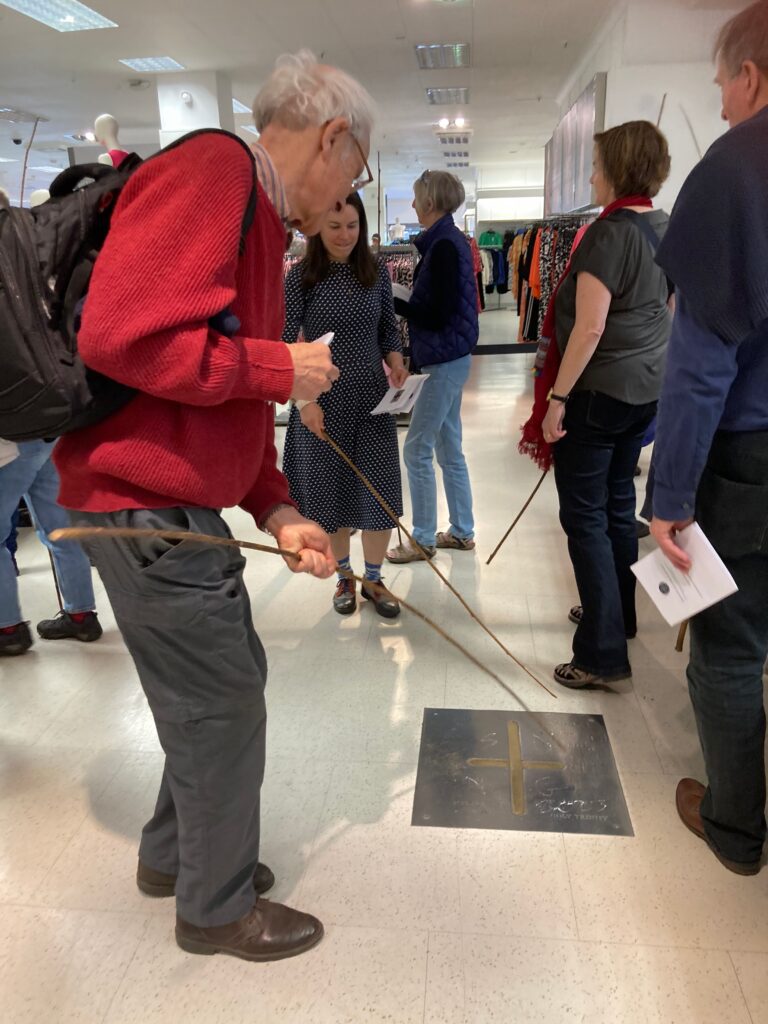
The metal plaque on the floor of Marks and Spencers
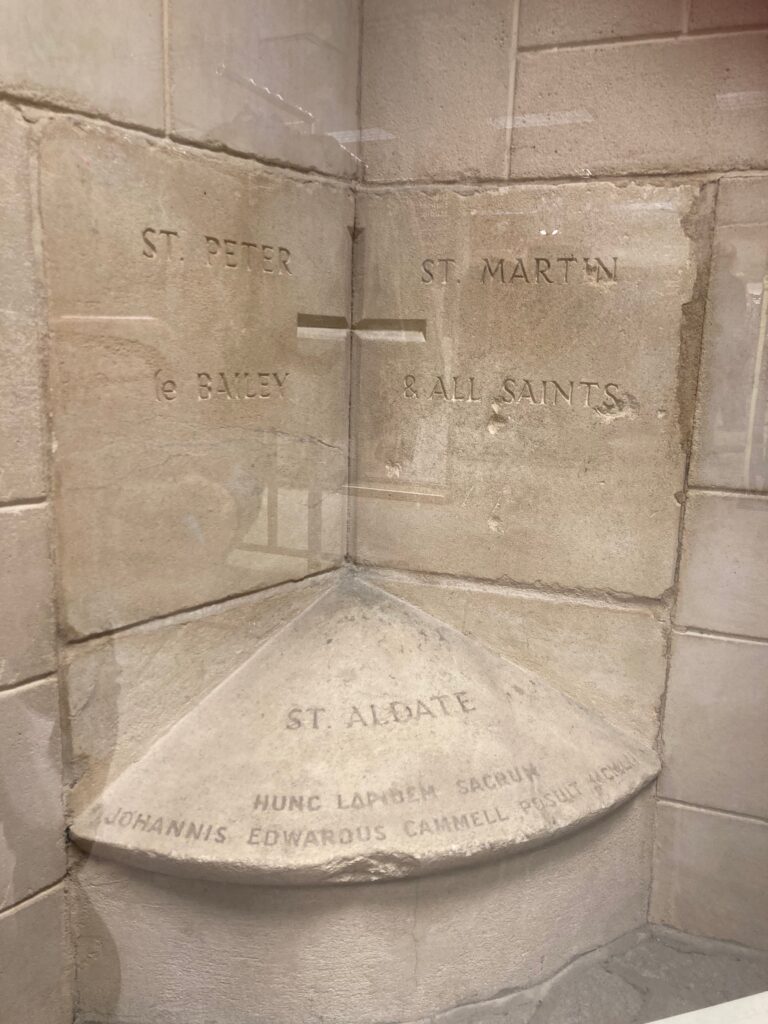
The old stone protected by a glass case in the corner of M & S
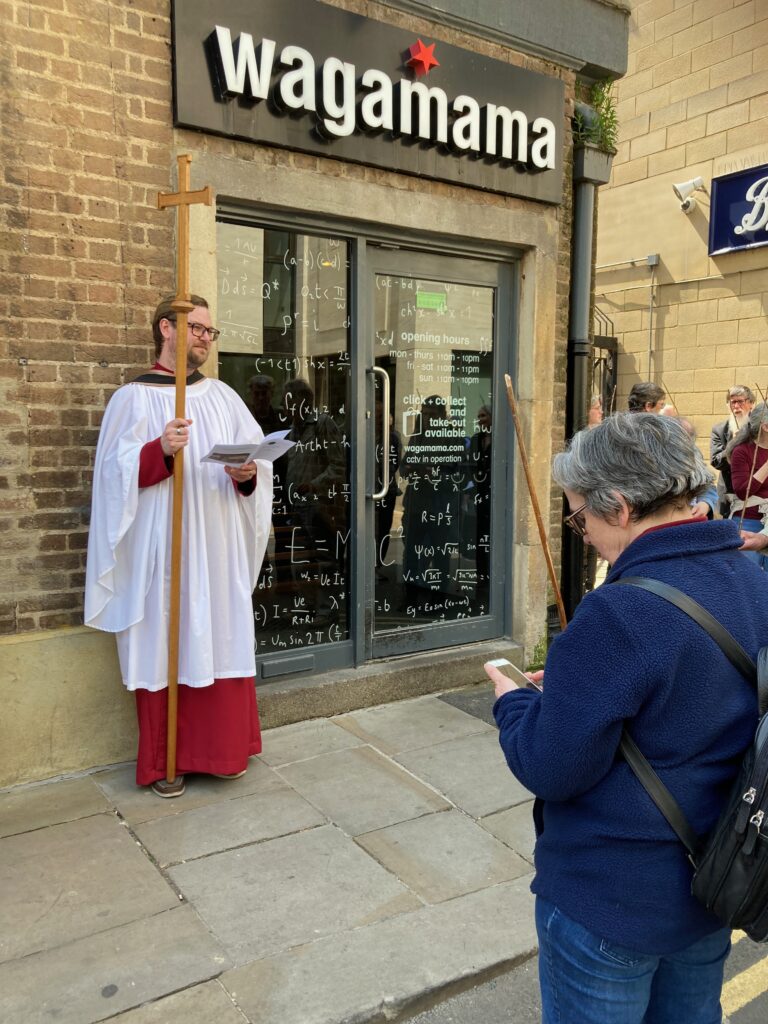
Waiting outside Wagamama
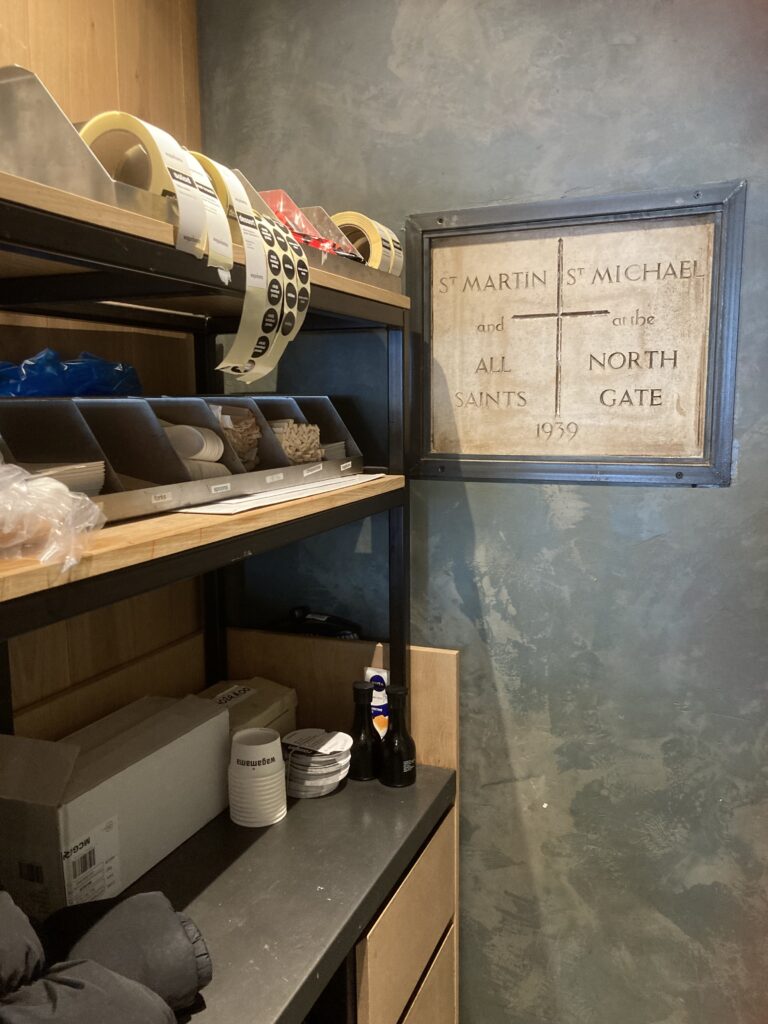
Tucked away inside the kitchen.
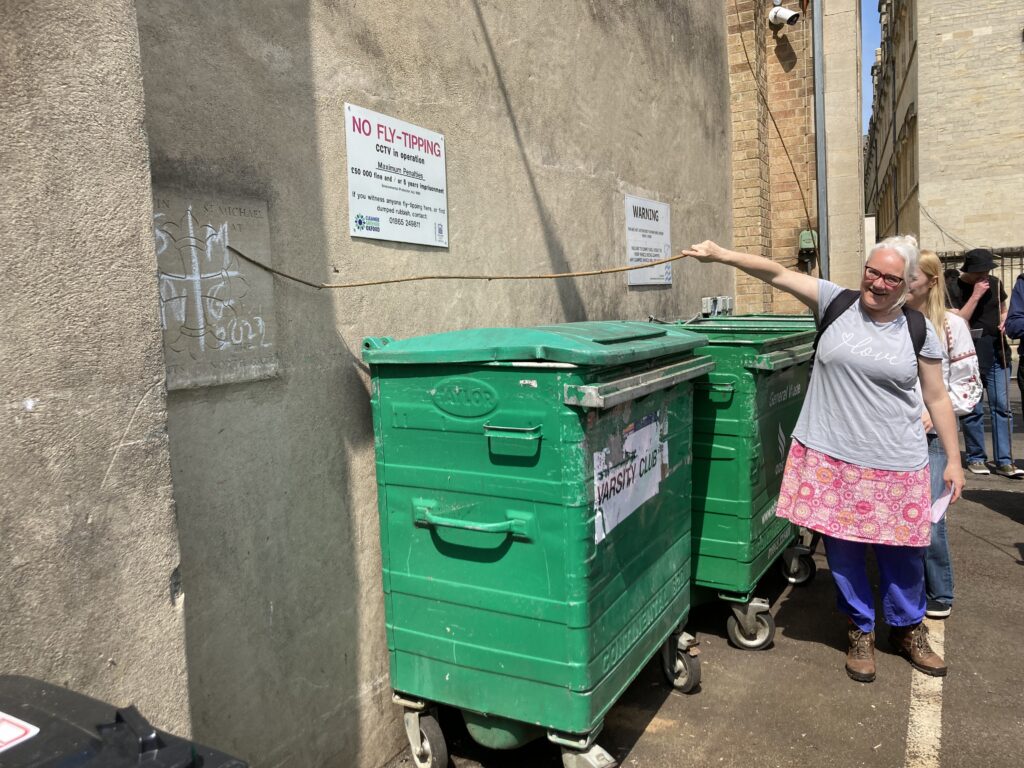
Off Market Street.
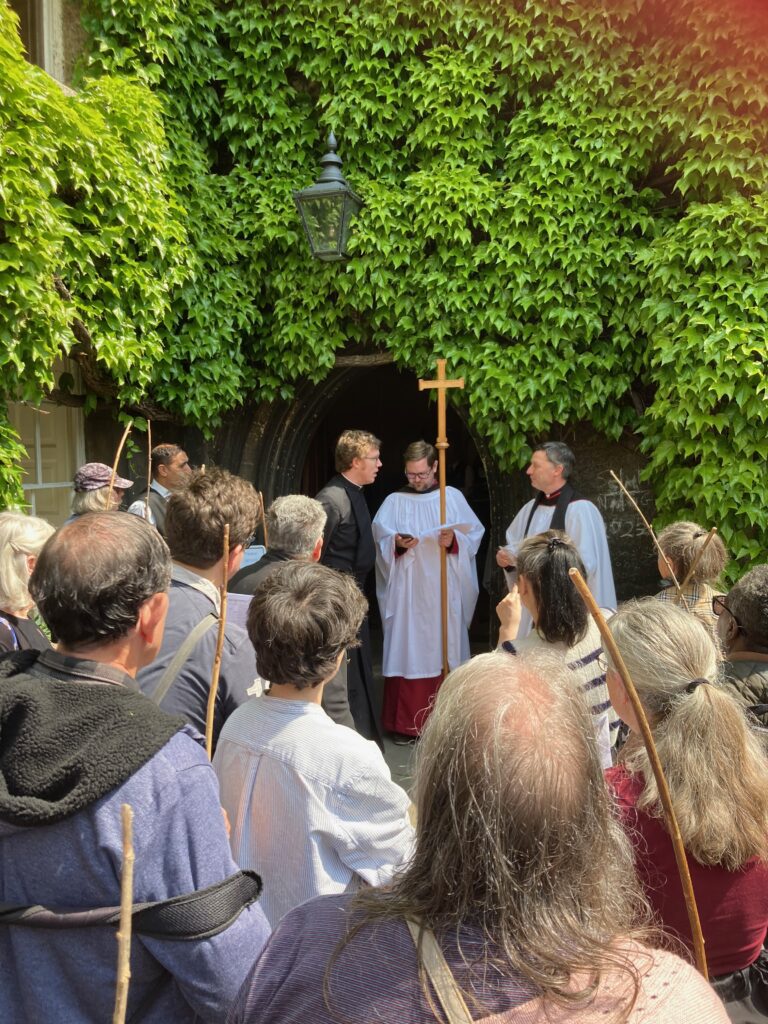
And inside Lincoln College
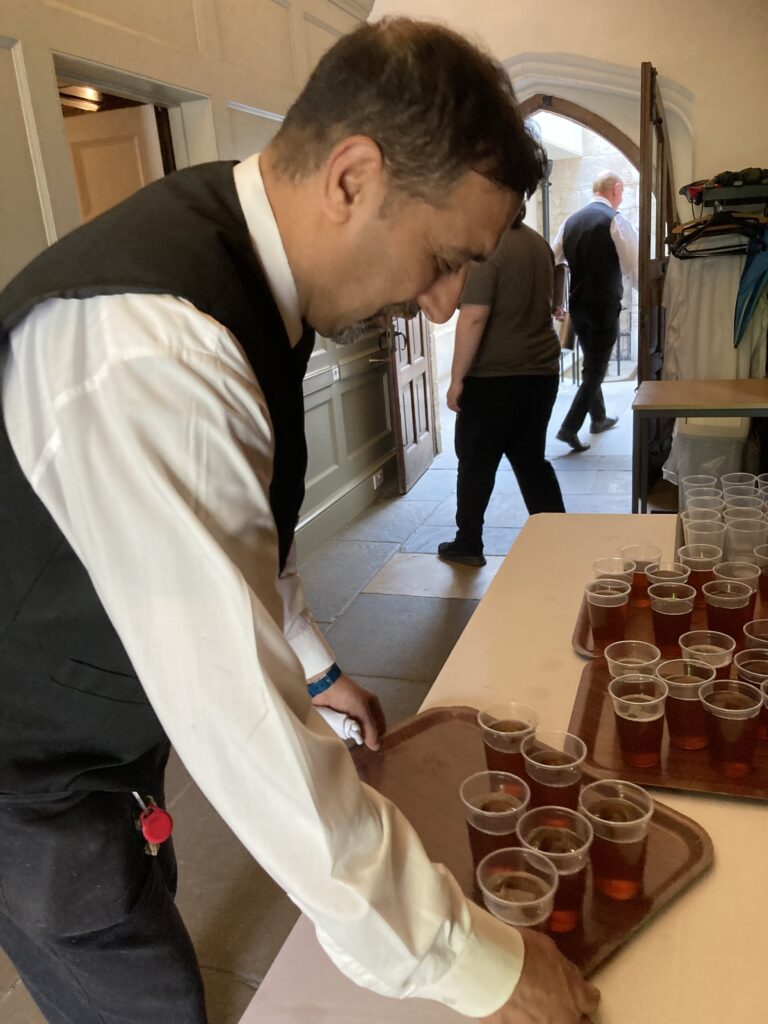
The ivy beer.
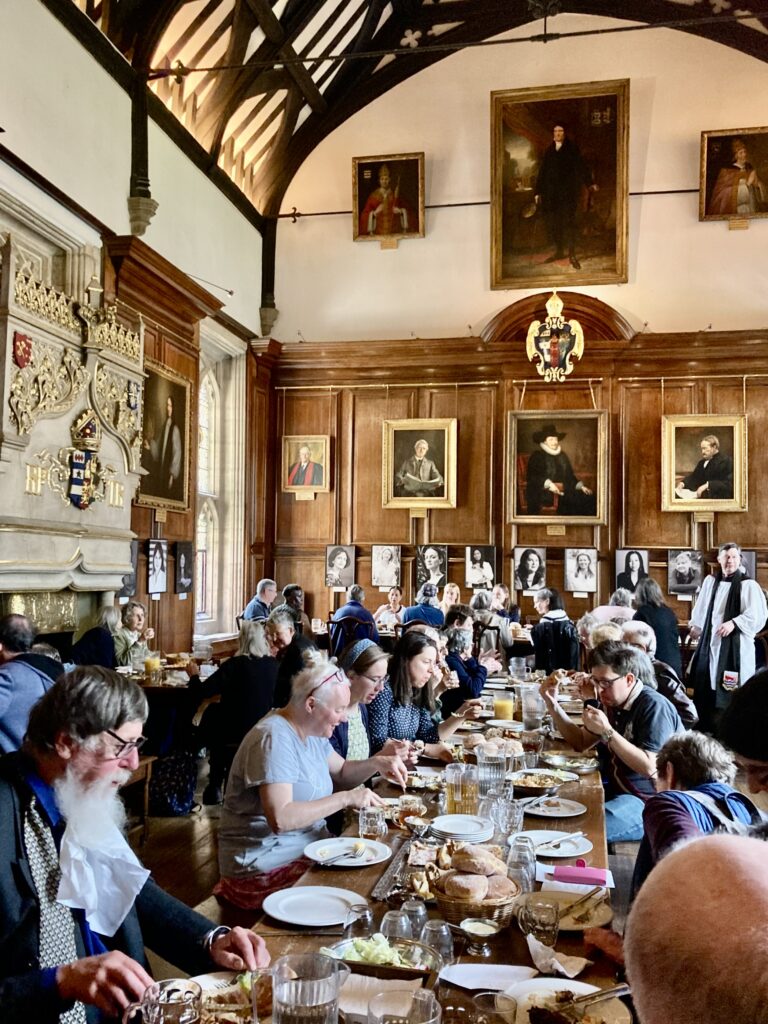
Lunch in the dining hall
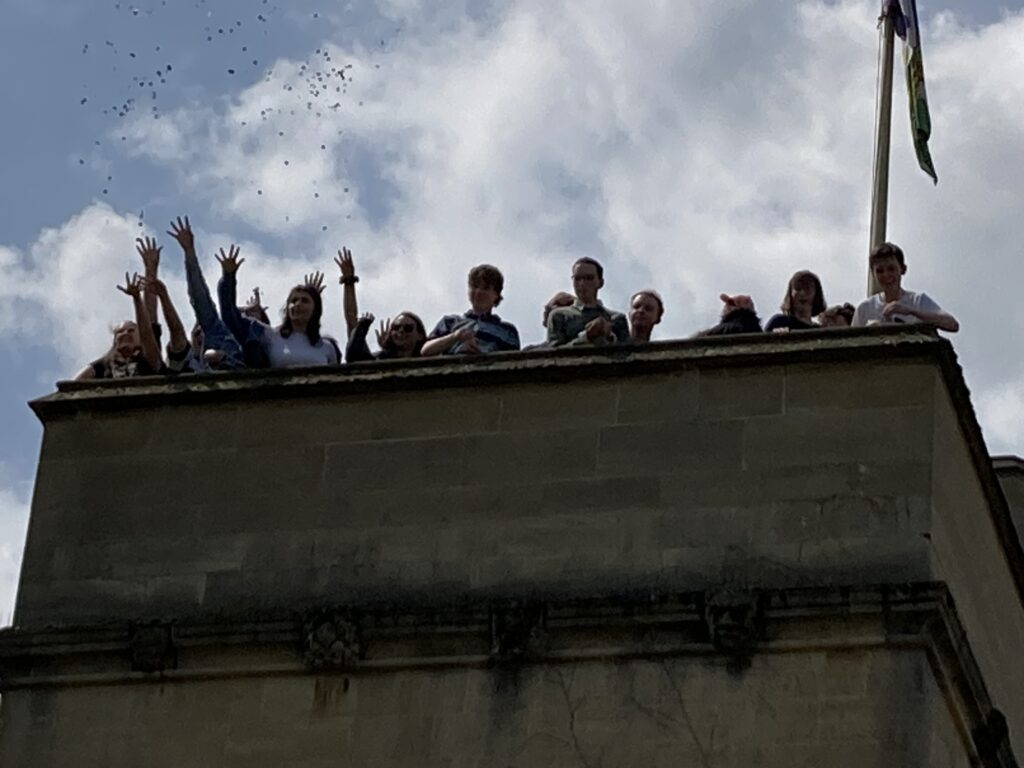
Tossing coins from the tower, not longer red hot,
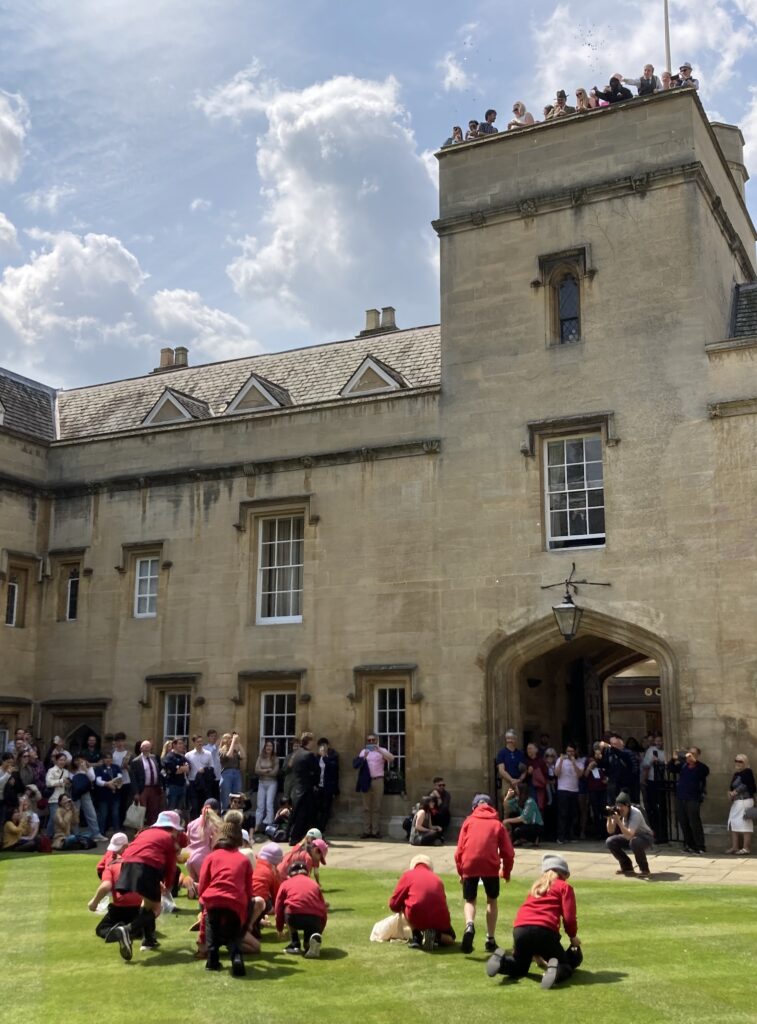
….for the children waiting on the lawn.
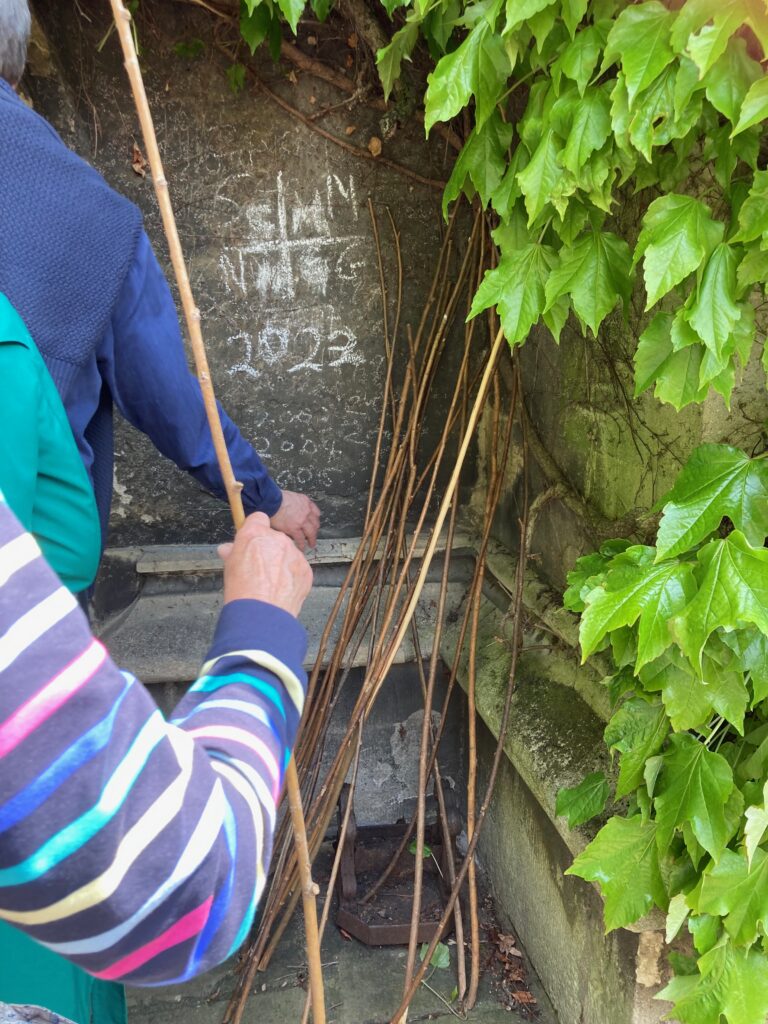
Our canes are left at the door. Until next year.
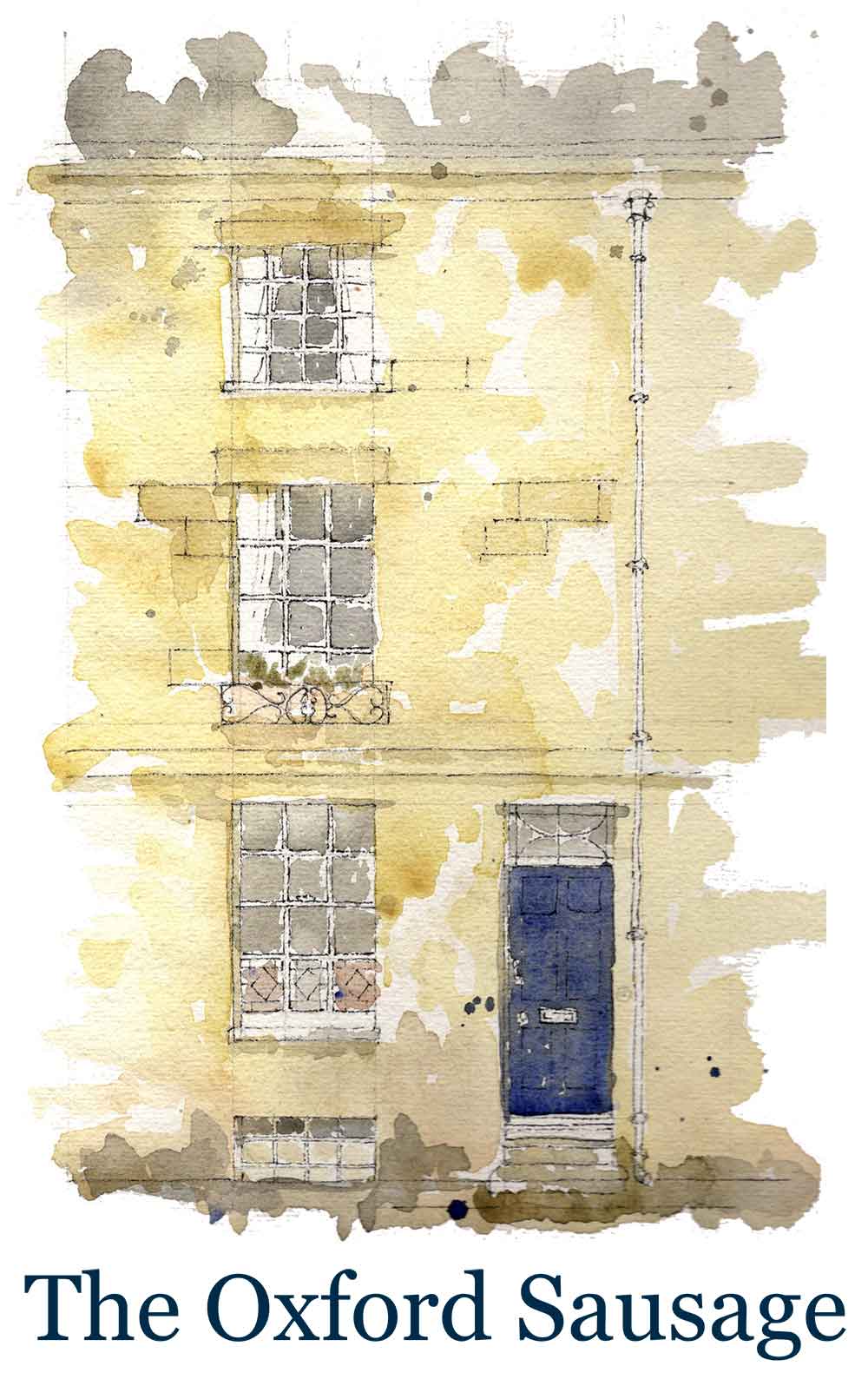
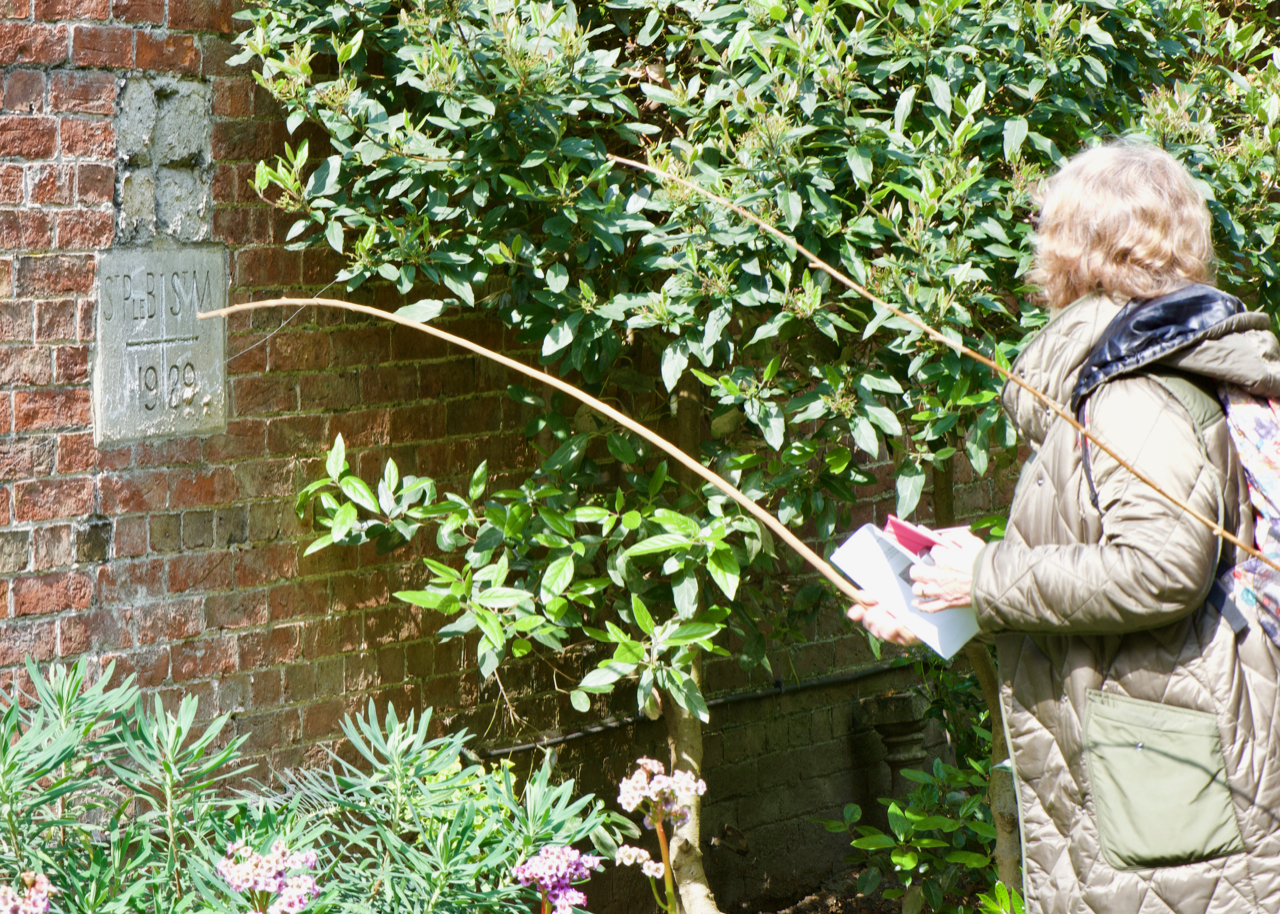
2 Comments
Join the discussion and tell us your opinion.
Wonderful description of an – as you say – mysteriously charming event.
[…] Beating the bounds […]